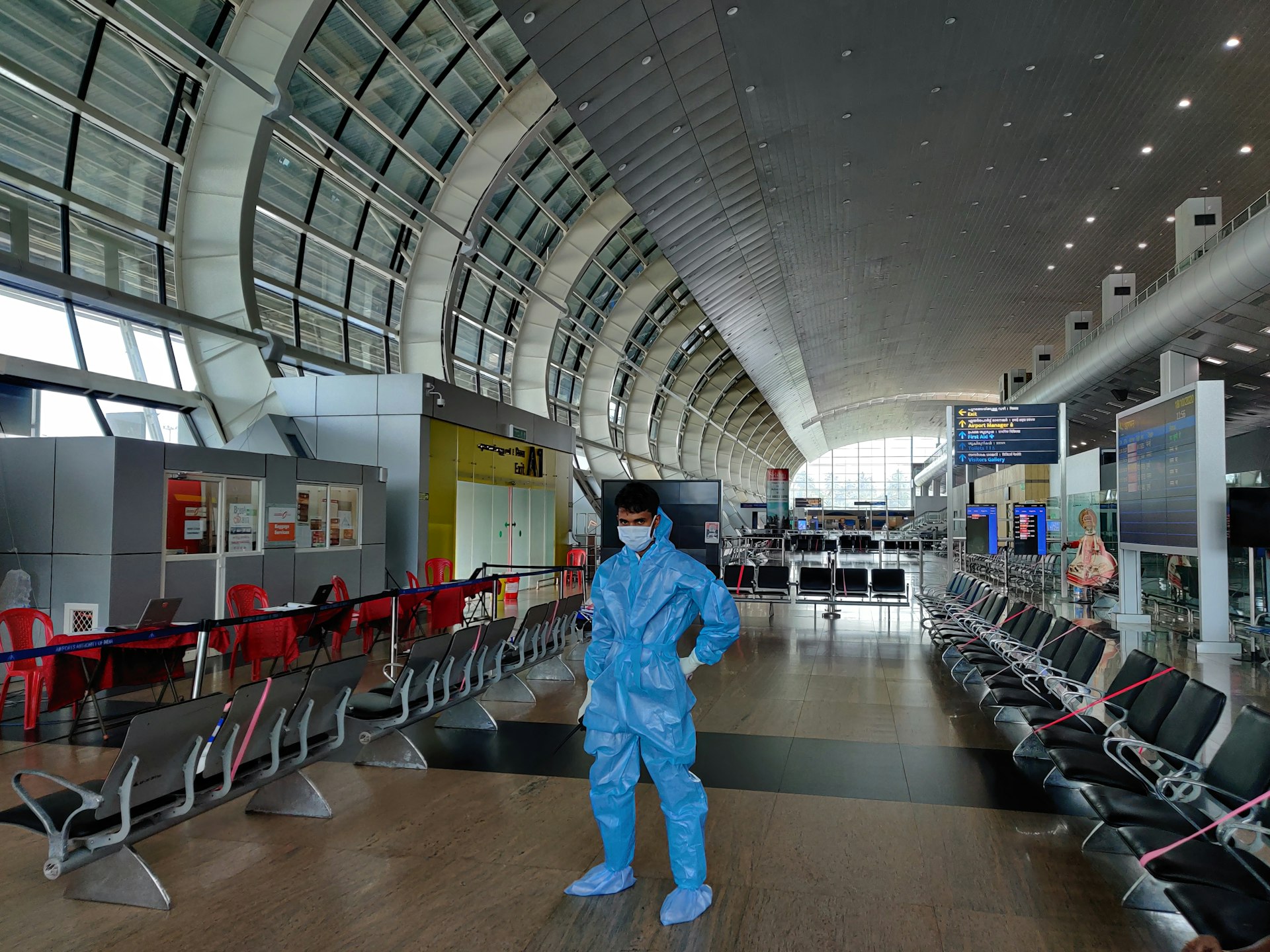How Climate Change Is Reshaping Fashion’s Seasonal Cycles and What You Can Do About It

Photo by Vlad Tamkin on Unsplash
Introduction: The Changing Face of Fashion Seasons
Fashion has long thrived on predictability: winter coats in November, sundresses in June, fall launches in August. However, climate change is rapidly dismantling these established seasonal patterns. As weather grows more erratic-think balmy Decembers, prolonged heat waves, or unexpected cold snaps-fashion brands, retailers, and consumers are all being forced to rethink how, when, and what to buy and wear. This article explores the core impacts of climate change on seasonal fashion cycles, practical ways brands and consumers are adapting, and actionable steps for engaging with the evolving fashion landscape.

Photo by Ainur Khakimov on Unsplash
Disrupted Seasons: How Climate Change Is Upending Fashion Calendars
Seasonality has always been a driving force behind fashion design, production, and marketing. Traditionally, brands created distinct spring/summer and fall/winter collections, allowing retailers and shoppers to anticipate and prepare wardrobes in advance. Today, this system is increasingly obsolete. According to industry experts and climate data, warming trends are extending warm-weather months and shortening winters, leading to less predictable demand for seasonal items [1] . For example, retailers are seeing lighter-weight “sweater weather” stretch well into winter, while heavy coats remain unsold until a sudden cold snap [2] .
Fashion buyers and merchandisers now track real-time weather patterns to adjust orders, often postponing the introduction of winter collections until cold weather actually arrives. This data-driven, reactive approach is replacing the rigid, calendar-based system that ruled the industry for decades.
Seasonless Style and Micro Seasons: The New Consumer Reality
Consumers are also shifting their habits in response to unpredictable weather. Instead of swapping wardrobes by the calendar, people are making day-to-day decisions based on actual conditions. The rise of “micro seasons”-short-lived periods of sudden heat or cold-means shoppers are less likely to buy entire seasonal wardrobes in advance and more likely to purchase versatile, transitional pieces throughout the year [1] [3] .
Retail analytics platforms such as Woveninsights show that demand for specific categories-like boots during unexpected snowstorms or lightweight dresses during early spring heat waves-can spike dramatically and with little warning [3] . This creates both challenges and opportunities for brands trying to align inventory with consumer needs.
Material Innovation: Embracing Heat-Resistant and Sustainable Fabrics
The shift in climate is also accelerating innovation in textiles. With record-breaking heat waves, consumers are demanding more comfortable, breathable fabrics that can handle extreme temperatures [4] . Natural fibers like linen, hemp, and organic cotton, known for their cooling properties, are gaining popularity. Companies such as PANGAIA are developing new materials-like seaweed fiber-that offer both comfort and sustainability.
High-tech textiles are also making waves. For example, Coolcore has patented a fabric technology that manages moisture and temperature without chemicals, keeping wearers cool during prolonged heat [4] . As consumers become more environmentally conscious, there is growing demand for materials that are both functional and eco-friendly.
Production and Inventory Management: Adapting to Weather Volatility
Brands are rethinking their entire supply chain to stay agile. Instead of ordering massive quantities months in advance, many are moving toward smaller, more frequent production runs based on real-time weather forecasts and sales data. This helps reduce waste, limit unsold stock, and better meet consumer demand [3] .
However, these changes bring new challenges: increased logistics costs, more complex inventory management, and the risk of missing sales spikes if production lags behind weather-driven demand. Retailers using advanced analytics and demand forecasting tools are better positioned to navigate these risks and seize emerging opportunities.
Practical Guidance: How Consumers and Brands Can Adapt
For Consumers
1. Build a versatile wardrobe. Focus on layering pieces, seasonless fabrics, and items that can adapt to unpredictable weather.
2. Shop for quality, not just trends. Durable, timeless pieces are more adaptable to shifting seasons and reduce overconsumption.
3. Seek out brands that prioritize sustainable materials and transparent supply chains. Look for certifications like Global Organic Textile Standard (GOTS) or OEKO-TEX for added assurance.
For Brands and Retailers
1. Invest in real-time data analytics to monitor weather patterns and adjust inventory dynamically.
2. Shorten production cycles and embrace smaller, responsive collections tailored to current conditions rather than set seasons.
3. Collaborate with textile innovators to adopt sustainable, high-performance fabrics that meet new consumer demands.
4. Communicate clearly with customers about product availability, material choices, and adaptive design features.
Case Study: Fashion and the End of Traditional Seasons
In the UK, the sixth-wettest spring on record led to a slump in summer clothing sales, as consumers delayed purchases until warm weather actually arrived. Major retailers reported unsold stock and profit declines, highlighting the risks of relying on outdated seasonal planning [5] . Similar trends are playing out globally, with brands from luxury houses to fast-fashion giants overhauling their calendars and design strategies.
Alternative Approaches and Solutions
Some brands are experimenting with made-to-order models, which produce garments only after a purchase is made, minimizing waste and ensuring relevance. Others are embracing digital fashion-designs that can be tried on virtually, reducing the need for multiple physical items. Secondhand and rental platforms have also grown as consumers seek more flexible, sustainable wardrobe options. To explore these alternatives, consider searching for “fashion rental services” or “online secondhand fashion platforms” and reviewing ratings from established outlets like Vogue Business or Business of Fashion.
Accessing Industry Resources and Further Guidance
If you’re a consumer interested in sustainable materials, use search terms like “certified sustainable clothing brands” and verify credentials through organizations such as the Global Organic Textile Standard (GOTS). For industry professionals, consider subscribing to retail analytics platforms or joining professional associations like the Council of Fashion Designers of America (CFDA) for webinars and resource libraries on climate adaptation. When seeking weather data for inventory planning, consult established meteorological agencies or platforms such as the National Weather Service or the Climate Central project.
Key Takeaways
Climate change is irreversibly altering the traditional fashion calendar, demanding greater agility, sustainability, and consumer awareness. Whether you’re updating your wardrobe or managing a retail brand, embracing seasonless style, investing in innovative materials, and leveraging real-time data are essential steps for thriving in the new climate reality. For more in-depth industry analysis, visit reputable sources such as The RealReal , El PaÃs and Just Style .
References
- [1] The RealReal (2024). Does Climate Change Spell the End of Sweater Weather?
- [2] El PaÃs (2023). The end of seasonal wardrobe changes and disrupted calendars.
- [3] Woven Insights (2025). How Consumer Behavior Changes Based on Weather and Seasonality.
- [4] NIIRA (2025). High Fashion Heatwave: Style Meets Sustainability.
- [5] Just Style (2024). Climate change and the death of traditional fashion seasons.
MORE FROM ismath.net













